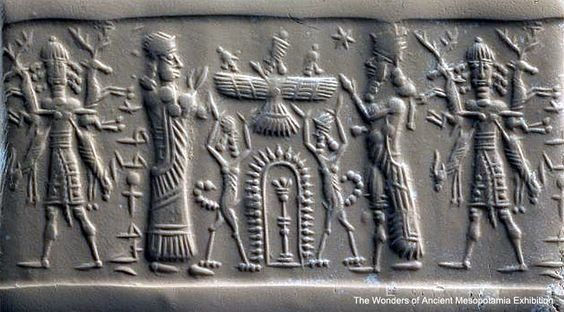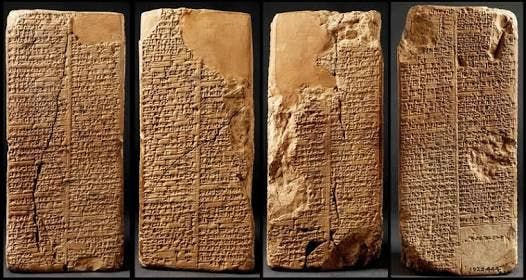
THE ANUNNAKI AND NIBIRU GROUP
In the ancient cosmic saga of the Anunnaki, rulers of the 9th dimensional Heaven from the distant planet Nibiru, their names echo through the corridors of time. Enki, the lower form of Eli, and Enlil, the lower form of Yeshua, emerged as brothers to equally share the dominion of planet Earth. These celestial beings, often likened to the Titans and Olympians, wielded power that transcended mortal comprehension. In the annals of mythology, they assumed various guises; Enki and Enlil, Loki and Thor, Cane and Abel, Seht and Horus; amplifying the eternal dance of dualities.
This lifetime, however, witnessed a transformative shift as they learned to share resources and energies, replacing ancient conflicts with a newfound camaraderie. The Anunnaki, masters of advanced technology, utilized sound frequency technology to construct the awe-inspiring pyramids of Egypt. Their celestial abode, Nibiru, half shrouded in darkness due to strategic rocket boosters, occasionally graced Earth's night sky as a symbol of benevolent connection. During these cosmic visitations, they bestowed loving downloads of information upon their starseed human ambassadors; artists, politicians, world leaders, and scholars, each carrying a spark of the divine.
Marduk, a prominent figure among the Anunnaki, orchestrated the transformation of Nibiru into a celestial vessel, enabling their escape from the asteroid belt. This nomadic journey fueled their desire to cultivate harmony with Earth and her inhabitants. Enki and Enlil, once locked in rivalry, embraced a newfound understanding. In this lifetime, they chose to share energies and resources, fostering a strong brotherhood reminiscent of friends engaged in playful debates and spirited exchanges.
No longer adversaries, they became architects of peace, weaving laughter, play, and joy into the fabric of their new relationship. As they tread the path of evolution, the brothers+turned+allies employed their influence for the betterment of all life forms. Through entertainment and education, they guided humanity toward enlightenment, ensuring a radiant future where the echoes of their laughter resonated in the cosmos for eternity.


ANUNNAKI HISTORY
Here's the story from beginning to end, based on the Sumerian tablet texts and research:
In the beginning, there were the Anunnaki, a group of extraterrestrial beings from the planet Nibiru. They came to Earth in search of gold, which they needed to protect their planet's atmosphere. They arrived on Earth and established their base in the city of Eridu.
The Anunnaki were led by the god Enlil, who was the chief scientist and engineer. He was responsible for creating humans through genetic engineering, using a combination of Anunnaki DNA and that of an existing primate species. The first humans were created as slaves to mine gold and perform other tasks for the Anunnaki.
As time passed, the Anunnaki began to argue among themselves about the treatment of humans. Enlil believed that humans should be kept as slaves, while his brother Enki, who was the chief medical officer, believed that humans should be given more freedom and autonomy.
Enki defied Enlil's orders and created two more advanced humans, who were given the ability to think and reason. The two were placed in a special enclosure designed to protect them from the rest of the world. After some time, they had a disagreement on who had more power, which led to the feminine leaving the masculine. With the masculine being alone and very lonely he then created another feminine out of his own energy.
However, Enlil discovered what Enki had done and was furious. He banished the masculine and the new feminine from the enclosure and forced them to fend for themselves. Enki continued to secretly help humans, teaching them agriculture, writing, and other skills. As humans began to multiply and spread across the Earth, the Anunnaki established kingships to rule over them.
The first king was Alulim, who was appointed by Enlil. However, Enki continued to influence human affairs, and many kings were secretly loyal to him. The Anunnaki also established a system of gods and goddesses, with each deity having a specific role and responsibility. Enlil was the chief god, while Enki was the god of wisdom and magic. Other Anunnaki were assigned to various planets and stars, and were worshipped as gods by humans.
Over time, the Anunnaki began to leave Earth, returning to their planet Nibiru. However, they left behind a legacy of knowledge and culture, which humans continued to develop and expand upon. The story of the Anunnaki and their creation of humans is preserved in the Sumerian tablet texts, which were written in cuneiform script around 4000 BCE.
As the Anunnaki settled into their new Home, they began to explore the Earth and its resources. They discovered new metals and minerals, and developed new technologies to extract and use them. They also discovered new forms of energy, and developed new ways to harness and use it. The Anunnaki also began to explore the mysteries of the universe. They built great observatories, and studied the stars and planets. They discovered new worlds, and began to travel to them, establishing colonies and trade routes.
As the Anunnaki continued to evolve and grow, they began to see themselves as more than just gods and goddesses. They saw themselves as guardians of the Earth and its resources, and they worked to protect and preserve the planet for future generations. And so, the Anunnaki continued to shape human history, guiding us towards civilization and technology, but also keeping us in a state of subservience and control. But as they evolved and grew, they began to see themselves in a new light, as guardians of the Earth and its resources, and they worked to protect and preserve the planet for future generations.
These texts provide a unique window into the beliefs and knowledge of ancient Sumer, and offer insights into the origins of human civilization. From this perspective, the story of the Anunnaki and humans is one of creation, conflict, and ultimately, the development of human civilization. It's a story that continues to fascinate and inspire people to this day.
ANUNNAKI GODS & GODDESSES

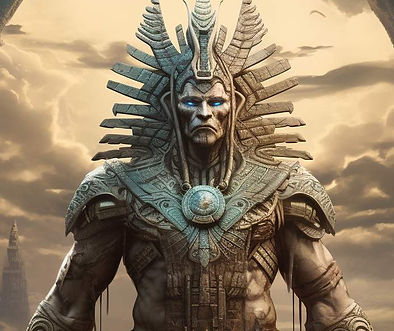
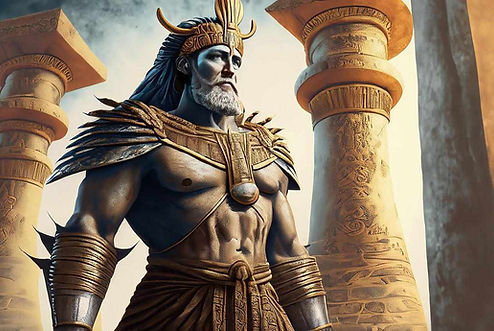
The Anunnaki gods and goddesses are part of ancient Mesopotamian mythology, and their attributes and roles can vary across different texts and interpretations.
Here are some of the main Anunnaki deities with brief descriptions of positive aspects and powers attributed to them:
1. *Anu (An):*
- Positive Aspect: Anu is considered the supreme god, associated with the Heavens and cosmic order.
- Power: As the ruler of the Anunnaki pantheon, Anu is often depicted as having authority over divine decisions and destiny.
2. *Enlil:*
- Positive Aspect: Enlil is seen as a benevolent deity and protector of humanity.
- Power: He governs the winds, storms, and agriculture, contributing to the fertility of the land.
3. *Enki (Ea):*
- Positive Aspect: Enki is associated with wisdom, creativity, and benevolence towards humans. - Power: Regarded as a god of freshwater, he is also linked to crafts, magic, and the arts.
4. *Ninhursag (Ninmah):*
- Positive Aspect: Ninhursag is often seen as a nurturing and healing goddess, symbolizing fertility and motherhood.
- Power: As a mother goddess, she is connected to the creation of humanity and the source of life.
5. *Inanna (Ishtar):*
- Positive Aspect: Inanna is associated with love, beauty, and vitality.
- Power: As the queen of Heaven, she is linked to fertility, war, and the cycles of nature.
6. *Utu (Shamash):*
- Positive Aspect: Utu is known for justice, truth, and righteousness.
- Power: As the sun god, Utu is associated with providing light, warmth, and guidance to humanity.
7. *Nergal:*
- Positive Aspect: Nergal's positive attributes include courage and protection.
- Power: He is often associated with war and the underworld, symbolizing both destruction and renewal.
8. *Nanna (Sin):*
- Positive Aspect: Nanna is honored for his wisdom and connection to the moon.
- Power: As the moon god, Nanna influences the cycles of time and is associated with fertility.
9. *Marduk:*
- Positive Aspect: Marduk is often associated with justice, leadership, and protection.
- Power: As the patron deity of Babylon, Marduk became a supreme god after defeating the primordial goddess Tiamat.
10. *Ereshkigal:*
- Positive Aspect: Ereshkigal is recognized for her resilience and transformative powers.
- Power: As the queen of the underworld, she holds dominion over the realm of the passed on ones.
11. *Ishkur (Adad):*
- Positive Aspect: Ishkur is honored for his role in bringing life+sustaining rain to the Earth.
- Power: As a storm god, he controls thunder, lightning, and rainfall, ensuring fertility and abundance.
12. *Nabu:*
- Positive Aspect: Nabu is associated with wisdom, writing, and scholarly pursuits.
- Power: He serves as a scribe of the gods and a keeper of knowledge, promoting education and learning.
13. *Nisaba:*
- Positive Aspect: Nisaba is known for her wisdom, writing, and protection of knowledge.
- Power: As the goddess of grain and harvest, she symbolizes fertility and abundance.
14. *Ningal:*
- Positive Aspect: Ningal is honored for her nurturing and protective qualities.
- Power: As the consort of Nanna, she is associated with the moon and maternal care.
15. *Humbaba:*
- Positive Aspect: Humbaba is often depicted as a guardian figure, protecting sacred areas.
- Power: In the Epic of Gilgamesh, Humbaba is the monstrous guardian of the Cedar Forest defeated by the hero Gilgamesh and Enkidu.
16. *Ningishzida:*
- Positive Aspect: Ningishzida is associated with healing, fertility, and protection.
- Power: As a serpent deity, he symbolizes transformation and regeneration.
17. *Dumuzid (Tammuz):*
- Positive Aspect: Dumuzid is linked to fertility, love, and the cycles of nature.
- Power: As a vegetation god, his myth involves annual transitions and rebirth, mirroring agricultural cycles.
18. *Geshtinanna:*
- Positive Aspect: Geshtinanna is associated with agriculture, wine, and fertility.
- Power: As the sister of Dumuzid, she plays a role in the seasonal cycles and the underworld.
19. *Ishara:*
- Positive Aspect: Ishara is often associated with love, fertility, and the goddess of oath.
- Power: As a deity of the oath, she is invoked in various rituals and contracts.
20. *Antu (Antum/Ki):*
- Positive Aspect: Antu is recognized as a nurturing and protective mother goddess.
- Power: As the consort of Anu, she holds a significant position in the divine family.
21. *Kingu:*
- Positive Aspect: Kingu is associated with primordial chaos and the potential for creation.
- Power: In some myths, Kingu is connected to Tiamat, representing the chaotic forces subdued by Marduk.


NOTE: This diagram is open for discussion, interpretation, and constructive criticism.
WHO IS ANU?
Father Anu is a prominent figure in Sumerian mythology, known as the supreme god of the Anunnaki and the ruler of the Heavens. Anu is often considered the father of gods and the creator of the universe, holding dominion over the sky. His name translates to "Heaven" or "sky," reflecting his association with celestial authority.
In the context of the Anunnaki, Anu is seen as the patriarchal figure, with his children and descendants; including Enlil (god of air) and Enki (god of wisdom and water); playing key roles in governing aspects of both the divine and earthly realms. Anu's role in mythology places him at the head of the divine council, making decisions about the fate of gods, humans, and the cosmos.
Anu’s influence extended to various aspects of early Mesopotamian culture, where he was worshipped as a figure of ultimate power, justice, and authority.

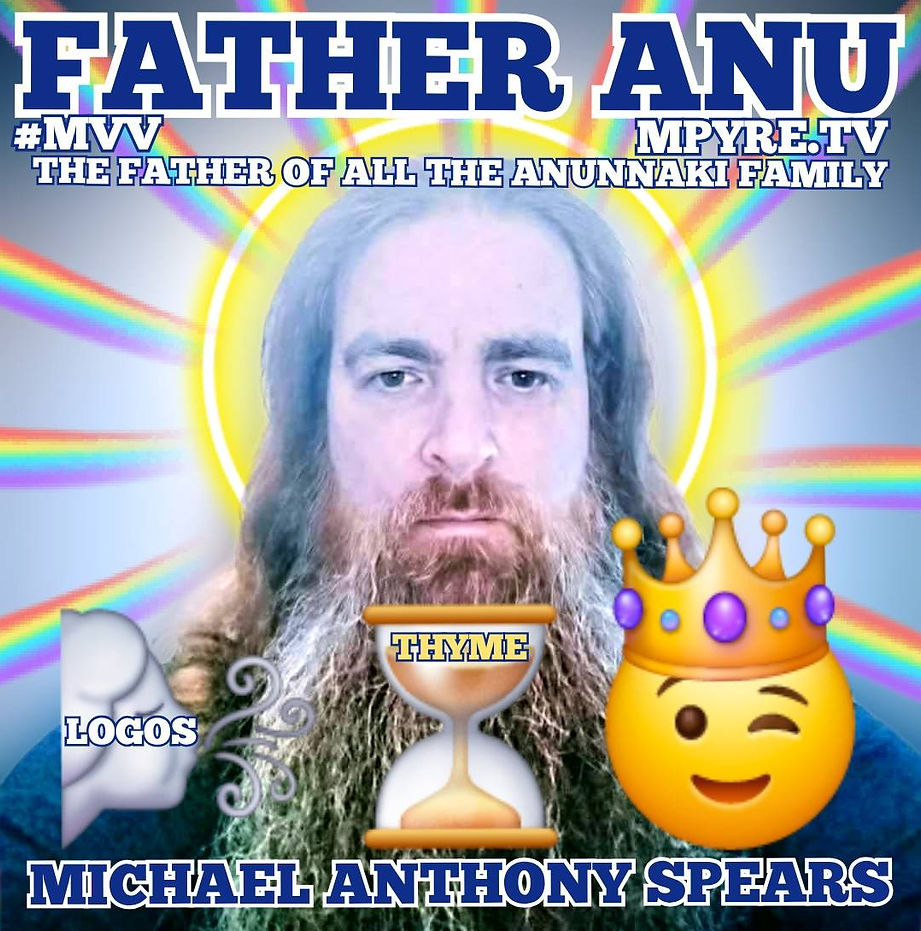
WHO IS KI?
Mother Ki, also known as Ninhursag or Ki, is a primordial earth goddess in Sumerian mythology, associated with fertility, creation, and the nurturing aspects of the Earth. She is often depicted as the counterpart of Anu, the sky god, forming a complementary pair where Anu rules the Heavens and Ki amplifies the Earth.
As the mother of the Anunnaki, Ki is seen as the maternal figure who helps bring life into the world, playing a crucial role in creation myths. Her union with Anu is believed to have given birth to key deities such as Enlil (god of air) and Enki (god of wisdom and water), among others. Ki’s connection to the Earth makes her the personification of the land, agriculture, and the cycles of nature, emphasizing her nurturing and life+sustaining qualities.
In some traditions, Ki is also associated with healing and protection, further highlighting her role as a caretaker and guardian of life. She is honored for her ability to create and sustain life, and has a strong connection to the physical world.

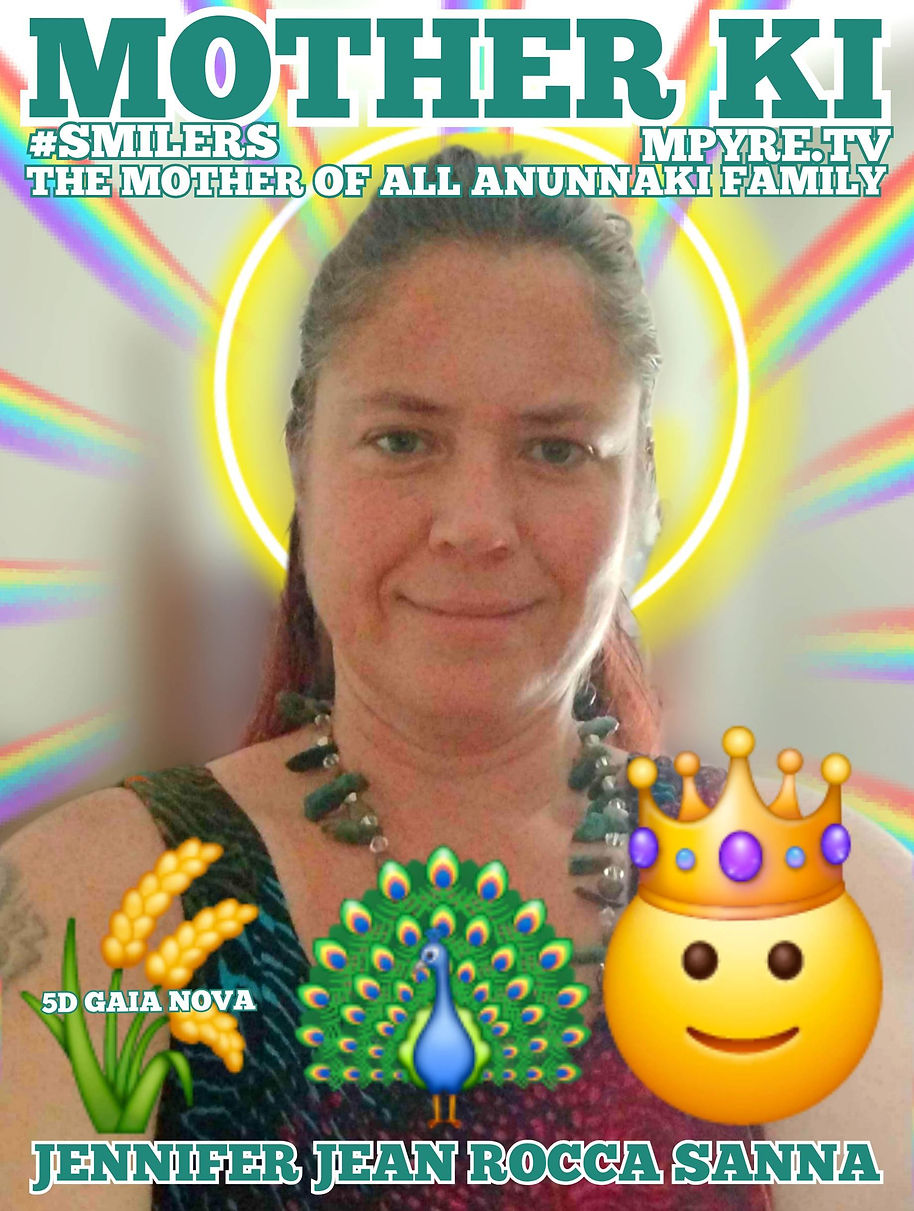
WHO IS DAMKINA?
Princess Damkina (also known as Damgalnuna or Dammekina) is a Mesopotamian goddess, primarily associated with the Earth and fertility. She is best known as the consort of the god Enki (also called Ea), the god of wisdom, water, and creation. Together, they are considered one of the important divine couples in Sumerian and Akkadian mythology.
As a goddess, Damkina is often connected with nurturing, fertility, and the Earth, reflecting her motherly role. She is the mother of Marduk, one of the chief gods in the Babylonian pantheon, who later rose to prominence in Mesopotamian theology as a king of the gods.
In some traditions, Damkina is considered to be the daughter of Anu (the sky god) and Ki (the Earth goddess), though this familial connection varies depending on the myth. Her marriage to Enki represents the union of the elements of water and earth, often symbolizing creation, fertility, and the life+giving forces of nature.
Damkina’s role as both a mother and consort gives her a prominent place in the pantheon, especially in connection to creation and the health of both humans and gods. Her nurturing and protective qualities are often emphasized, aligning her closely with the fertility of the land and the continuation of life.
WHO IS ENKI?
Enki, also known as Ea in Akkadian mythology, is an honored 9th dimensional god of the Anunnaki, an ancient group of deities in Sumerian, Akkadian, and Babylonian mythology. As a prominent figure within the Mesopotamian pantheon, Enki is associated with water, wisdom, creation, magic, and the arts of civilization. He is considered the master of crafts (god of craftsmanship), the keeper of the divine laws known as the Me, and a guardian of humanity.
Enki is the son of Anu, the sky god, and is typically portrayed as a benefactor to mankind, often intervening to protect and guide humans through challenges. He is credited with imparting knowledge to humanity, including teaching the arts of agriculture, writing, and building, helping to shape human civilization. Enki’s wisdom and strategic thinking were essential in the creation myths, particularly in the story of the flood, where he warned the Sumerian hero Ziusudra (Akkadian Utnapishtim) to build a boat to save humanity.
In artistic depictions, Enki is often shown as a bearded man surrounded by streams of water, symbolizing his dominion over the sweet waters (the Abzu) and his role as a life+giver.
Enki’s influence extends beyond ancient myth, resonating in spiritual and esoteric traditions as a figure amplifying the integration of wisdom, creativity, and benevolence. His legacy continues to inspire those who seek knowledge, innovation, and the betterment of humanity.
WHO IS NINLIL?
Princess Ninlil, the daughter of Anu and Ki, is a significant figure in Sumerian mythology. As the goddess of the wind and air, she plays an important role in the mythological balance of the elements. Ninlil is often regarded as the consort of Enlil, the god of air and storms, which solidifies her importance in the pantheon as part of the divine couple who control the skies and the forces of nature.
Ninlil’s mythology often emphasizes themes of fertility, reproduction, and the nurturing of life. One of the most known stories about Ninlil involves her relationship with Enlil, in which they have a series of children, including the moon god Nanna (Sin), who governs time and seasons. Their union symbolizes the harmony between the winds and storms of the sky, amplifying the interaction between cosmic and earthly forces.
Ninlil's role is one of both a loving mother and a powerful goddess, amplifying the life+sustaining aspects of air and wind while playing a maternal role in the creation of other divine beings. As a daughter of Anu (the sky) and Ki (the Earth), her divine heritage links her to both the Heavens and the Earth, making her a bridge between these realms.
In this way, she represents a nurturing force but also one that commands great authority over nature, further contributing to the cycles of fertility and life that were vital to ancient Mesopotamian belief systems.
WHO IS ENLIL?
Enlil is the son of Anu, the sky god, and the brother of Enki, the god of wisdom and water. In Sumerian mythology, Enlil’s influence is vast, and he plays a central role in the creation of the world and the regulation of order among gods and humans. He is credited with separating Heaven and Earth, establishing the cosmic order, and granting kingship to humans, which was seen as a divine institution meant to maintain balance and justice.
As a god of storms and the atmosphere, Enlil was honored and feared for his ability to bring both prosperity and destruction. His wrath could manifest in the form of violent storms or droughts, while his favor was associated with abundant harvests and protection. Despite his sometimes harsh nature, Enlil was also seen as a protector of humanity, ensuring that the laws and decrees of the gods were upheld to preserve cosmic order.
Enlil’s role in myth is significant, particularly in stories such as the Sumerian creation epic Enuma Elish, where he is involved in decisions regarding the fate of humanity, including the giving of the great flood. In the Sumerian poem Atrahasis, Enlil's decision to give the flood was later mitigated by his brother Enki, who warned the hero to build an ark, showing the complex dynamics between the gods.
Enlil’s temple, the Ekur, located in the city of Nippur, was one of the most important centers in Mesopotamia, symbolizing his authority and central role in the Anunnaki hierarchy. Worshipped as a god of kings and a guardian of civilizations, Enlil’s influence was paramount in the ancient world, representing the divine will that shaped the fate of nations.
Enlil's legacy endures as a symbol of divine authority, justice, and the forces of nature that govern the world. His mythology continues to resonate in the study of ancient theologies and the exploration of humanity's relationship with the divine and natural world.
NEPTUNE "GAS STATION" FOR THE ANUNNAKI
Neptune may be imagined as a "gas station" for the Anunnaki from Planet X, also known as Nibiru, in a mythological context.
Neptune as a "Gas Station" for the Anunnaki
Resource Hub:
Neptune serves as a vital resource hub for the Anunnaki, providing essential gases and materials needed for their advanced technologies and interstellar travel.
Chemical Composition:
The planet's atmosphere is rich in hydrogen, helium, and other gases, which may be harvested for fuel or other purposes by the Anunnaki as they navigate the cosmos.
Strategic Location:
Positioned on the outer edges of the solar system, Neptune acts as a strategic waypoint for the Anunnaki during their journeys between Nibiru and other celestial locations.
Symbolic Significance:
Neptune's strong blue color and mysterious composition may resonate with the Anunnaki's celestial heritage, making it a significant location in their story.
PLUTO AS A "LANDING PAD" FOR THE ANUNNAKI
Pluto as a Landing Pad and Security Checkpoint for Nibiru
Gateway to Nibiru:
Pluto is a remote landing pad for spacecraft traveling to and from Nibiru, acting as a preliminary waypoint/checkpoint for any visitors or cargo bound for the Anunnaki's Home planet.
Customs and Security Checkpoint:
Entry Clearance:
Before entering Nibiru, all ships go through a rigorous customs process on Pluto. This involves inspections of both personnel and cargo to ensure compliance with Anunnaki regulations.
Security Protocols:
Advanced technologies and guardianship from the Anunnaki is utilized to verify the identities of incoming travelers and the nature of their goods, ensuring that no unauthorized entities enter Nibiru.
Surveillance and Monitoring:
Pluto's remote location facilitates a secure environment for monitoring space traffic. Surveillance systems, involving advanced technology from the Anunnaki, keep watch over incoming vessels, providing early warnings of potential threats.
Resource Refueling and Repairs:
In addition to security checks, Pluto serves as a resource point for refueling and repairing spacecraft, ensuring that travelers are equipped for their journey to the inner solar system or back to Nibiru.
Interstellar Diplomacy:
This checkpoint serves as a diplomatic space for meetings between Anunnaki representatives and visitors from other civilizations, allowing for negotiations and discussions before entering Nibiru's space.
THE SUMERIAN TABLETS
1. *Discovery:*
- Found in ancient Sumerian cities, including Nippur, Ur, and Eridu.
- Written in cuneiform script on clay tablets.
2. *Epic of Gilgamesh:*
- Epic poem recounting the adventures of Gilgamesh, a legendary Sumerian king.
- Themes include friendship, mortality, and the quest for immortality.
3. *Enuma Elish:*
- Babylonian creation myth detailing the emergence of the gods and the universe.
- Highlights the power struggles among deities, particularly the defeat of Tiamat by Marduk.
4. *Atra-Hasis:*
- Describes the Great Flood and the hero Atra-Hasis building an ark to survive.
- Reflects themes of divine punishment, survival, and renewal.
5. *Lessons and Positive Aspects:*
- Emphasize virtues such as wisdom, justice, and the consequences of hubris.
- Advocate for respect toward the gods, proper governance, and human flourishing.
6. *Origin and Cultural Significance:*
- Originated in ancient Sumer, one of the earliest known civilizations.
- Served as theological, historical, and literary texts, providing insights into Sumerian beliefs.
Connection to Anunnaki:
1. *Anunnaki in Sumerian Mythology:*
- Anunnaki are often mentioned in Sumerian texts as a group of deities.
- They play various roles in creation, governance, and interactions with humanity.
2. *Creation of Humans:*
- Some Sumerian texts, like the Atrahasis, attribute the creation of humans to the divine assembly, including the Anunnaki.
3. *Deities' Roles:*
- Anunnaki gods and goddesses, such as Enlil and Enki, feature prominently in these narratives. - Their actions shape the fate of humanity and the cosmos.
4. *Cultural and Theological Context:*
- Sumerian tablets contribute to understanding the theological and cultural practices of ancient Sumer.
- They provide a foundation for the later Babylonian and Assyrian mythologies that inherited Sumerian traditions.
Connection to Egypt:
1. *Geographical Separation:*
- Sumerian tablets were not found in Egypt; rather, they originated in Mesopotamia.
2. *Distinct Cultures:*
- Egyptian civilization had its own set of theological texts, such as the Pyramid Texts.
- These texts are distinct from Sumerian tablets but share common themes of cosmology and the afterlife.
3. *Cultural Exchanges:*
- Over time, there were cultural exchanges between Mesopotamia and Egypt, influencing each other's theologies and mythological traditions.
While Sumerian tablets provide valuable insights into early human thought and culture, it's crucial to acknowledge that they were distinct from Egyptian texts, each contributing to the unique tapestry of ancient civilizations.
SUMERIAN TABLETS PHOTO GALLERY






















